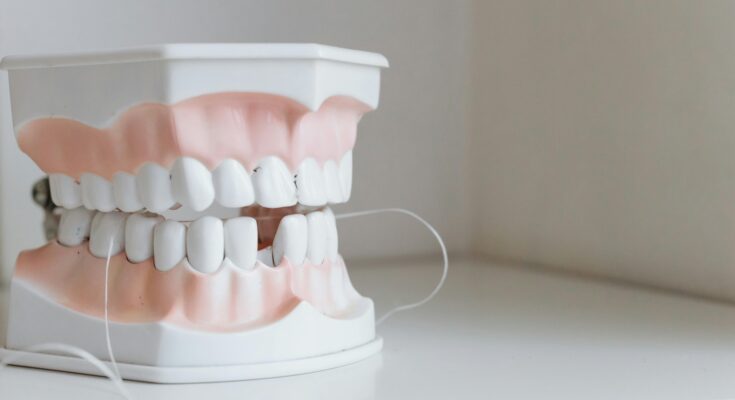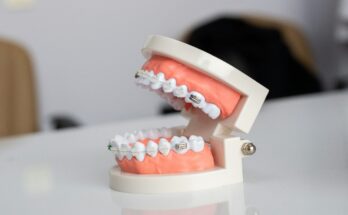If you’ve ever thought, “Why do my gums hurt after flossing?” you’re not alone. Many people experience sore or bleeding gums when they start flossing or even after doing it regularly. While flossing is essential for good oral health, gum pain can be a sign that something isn’t right.
In this blog, we’ll discuss the common reasons why your gums hurt after flossing, how to prevent it, and when to see a dentist. By the end, you’ll know how to floss correctly and keep your gums healthy.
Common Reasons Why Gums Hurt After Flossing
1. You’re New to Flossing
If you’ve just started flossing, your gums might feel tender or even bleed a little. This happens because the gums aren’t used to the stimulation. Over time, as you floss daily, your gums will get stronger, and the pain should go away.
2. Flossing Too Hard
Being too destructive with flossing can hurt your gums. If you snap the floss into your gums or push too hard, it can cause irritation and pain. Always use gentle, up-and-down motions instead of forcing the floss.
3. Gum Disease (Gingivitis or Periodontitis)
If your gums hurt after flossing and bleed often, you might have first gum disease (gingivitis) or a more severe form (periodontitis). Plaque buildup leads to inflammation, making gums sensitive. Regular flossing and dental cleanings can help reverse gingivitis.
4. Using the Wrong Type of Floss
Some floss types (like thick or flavored floss) can irritate gums. If your gums hurt after flossing, try switching to a softer, waxed floss or a water flosser for a gentler clean.
5. Poor Flossing Technique
If you’re not flossing correctly, you might be harming your gums. The right way is to curve the floss around each tooth in a C-shape and slide it gently below the gumline—don’t saw back and forth.
6. Food Particles or Debris Stuck in Gums
Sometimes, a small piece of food gets stuck deep between teeth and gums, causing irritation when flossing. If the pain persists, rinse with warm salt water or see a dentist.
7. Allergic Reaction to Floss or Mouthwash
Some flosses contain chemicals or flavors that can irritate sensitive gums. If switching floss doesn’t help, check if your mouthwash or toothpaste could be the cause.
How to Stop Gums from Hurting After Flossing
If your gums hurt after flossing, try these simple fixes:
1. Be Gentle
Flossing should never be painful. Use soft, slow motions and avoid snapping the floss.
2. Floss Daily
Skipping flossing makes gums more sensitive. Floss once a day to keep gums healthy and reduce pain over time.
3. Use the Right Floss
. Waxed floss slides easier between tight teeth.
. Soft floss or tape floss is better for sensitive gums.
. Water flossers are a great alternative if traditional flossing hurts.
4. Rinse with Salt Water
Salt water reduces inflammation and soothes sore gums. Mix ½ teaspoon of salt in warm water and swish for 30 seconds.
5. Improve Your Technique
. Curve the floss around each tooth.
. Slide gently up and down, not side to side.
. Don’t force floss into tight spaces—use a thinner floss instead.
6. Visit Your Dentist
If your gums hurt after flossing for more than a week, see a dentist. You might need a professional cleaning or treatment for gum disease.
When to See a Dentist
You should see a dentist if:
✔ Your gums bleed every time you floss.
✔ The pain doesn’t go away after a week.
✔ Your gums are swollen, red, or receding.
✔ You notice pus or bad breath along with gum pain.
These could be signs of gum disease or infection that need professional care.
Myths About Flossing and Gum Pain
“Bleeding Gums Mean You Should Stop Flossing”
Actually, bleeding gums are a sign you should floss more (gently!). Skipping flossing makes gum problems worse.
“Flossing Once a Week is Enough”
Plaque builds up daily, so flossing once a week isn’t enough. Aim for at least once a day.
“Only People with Bad Teeth Get Gum Pain from Flossing”
Even people with healthy teeth can experience gums hurt after flossing if they’re new to it or using the wrong technique.
Final Thoughts
If your gums hurt after flossing, don’t panic—it’s usually fixable. Most of the time, the pain comes from flossing too hard, not flossing enough, or early gum disease. By flossing gently every day, using the right technique, and seeing your dentist regularly, you can keep your gums healthy and pain-free.
Remember, healthy gums shouldn’t hurt. If the pain continues, don’t ignore it—schedule a dental checkup to prevent bigger problems.
Did you find this article helpful? Share it with someone who struggles with gum pain after flossing! By following these tips, you can make flossing a pain-free part of your daily routine. Keep smiling!



